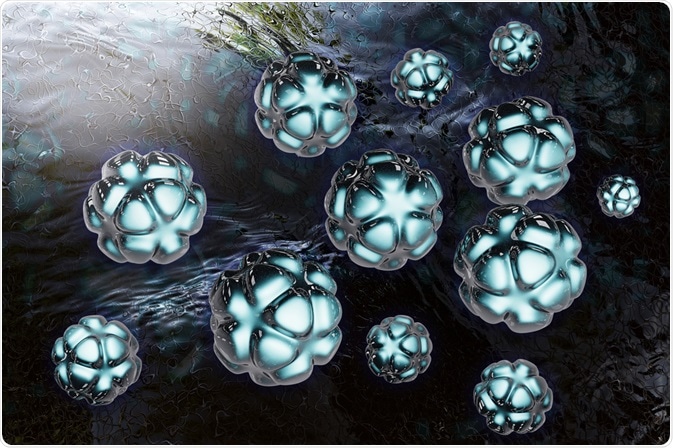Nanogels are nanoparticles cross-linked with a hydrophilic polymer network. They are of interest to a variety of fields, including drug delivery and bioimaging as they are able to encapsulate molecules or respond to external stimuli.

xrender | Shutterstock
The use of nanoparticles allows characteristics such as the size and shape, softness, porosity, charge, and degradability of the gel to be adjusted for the intended application.
Nanogels aim to integrate the features and advantages of both nanoparticle carrier systems and hydrogels. This allows the grouping of multiple bioactive molecules into a single delivery platform, the ability to design nanogels with active or passive targeting in mind, buy cheap seroquel online without prescription and the triggered release of a payload (through natural or synthetic stimuli).
What are the advantages of nanogels?
Nanogels are able to prolong the retention time of drugs and other small molecules in the body by preventing interaction with circulating proteins and processing through the renal or biliary system. Their fluid-like transport properties and biocompatibility make them ideal carriers for drugs, contrast agents, probes and reporter molecules.
Since the hydrophobicity of a nanogel can be fine-tuned, a wide variety of functional small molecules and biomolecules can be protected and delivered. For example, therapeutic oligonucleotides are highly unstable hydrophilic molecules that are negatively charged. This makes them unable to pass cell membranes unassisted.
To overcome this issue, scientists developed cationic nanogels consisting of weakly cross-linked hydrophilic polymer chains with a high degree of porosity that permits the encapsulation of macromolecular therapeutic agents, unlike conventional nanoparticle carriers.
The ability of nanogels to incorporate layers of different hydrophobicity offers the advantage of simultaneous drug release in combinations not possible using most drug carriers. One widely used example of this is chemotherapeutic drugs.
How do external stimuli affect nanogel properties?
External cues from within the body, such as pH, temperature, redox conditions, or enzyme concentration, in addition to external stimulus from a source such as the application of light or a magnetic field, can be used to influence the properties of a nanogel. This may be a conformational or structural change, swelling or constriction of the gel. Swelling of the gel releases its cargo into the environment.
For example, pH dependent ionization of functional groups present on polyelectrolyte nanogels results in an increase in osmotic pressure within the gel due to trapped counterions. This results in swelling of the gel, the extent of which also depends on the elasticity of the polymer from the hydrophilicity of cross-linkers and degree of crosslinking.
The environment within tumors is acidic compared with the average pH of the body, and so nanogels can be designed to undergo swelling when in this environment, and thus release a drug payload.
As mentioned above, externally applied stimuli, such as the application of a magnetic field or light, can also be used to initiate nanogel swelling, or induce physical or conformational changes.
Near infra-red light is highly penetrates through biological tissue, and gold and silver nanoparticles heat rapidly when exposed to it. Cross-linkers can be designed to disintegrate when heated above a particular temperature by the application of light, releasing any payload.
Sources
- Nanogels: An overview of properties, biomedical applications and obstacles to clinical translation – https://www.sciencedirect.com/science/article/pii/S0168365915302339
- Basic concepts and recent advances in nanogels as carriers for medical applications – https://www.tandfonline.com/doi/full/10.1080/10717544.2016.1276232
Further Reading
- All Nanoparticle Content
- Nanoparticles – What are Nanoparticles?
- Nanoparticle Uniformity
- Properties of Nanoparticles
- Synthesis of Nanoparticles
Last Updated: Dec 20, 2018

Written by
Michael Greenwood
Michael graduated from Manchester Metropolitan University with a B.Sc. in Chemistry in 2014, where he majored in organic, inorganic, physical and analytical chemistry. He is currently completing a Ph.D. on the design and production of gold nanoparticles able to act as multimodal anticancer agents, being both drug delivery platforms and radiation dose enhancers.
Source: Read Full Article
